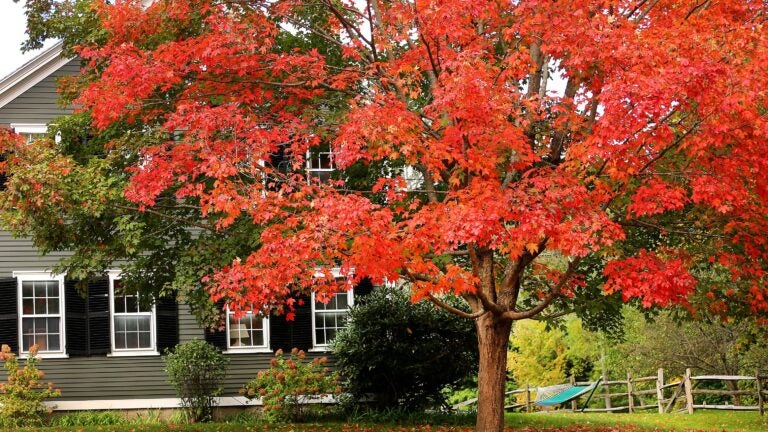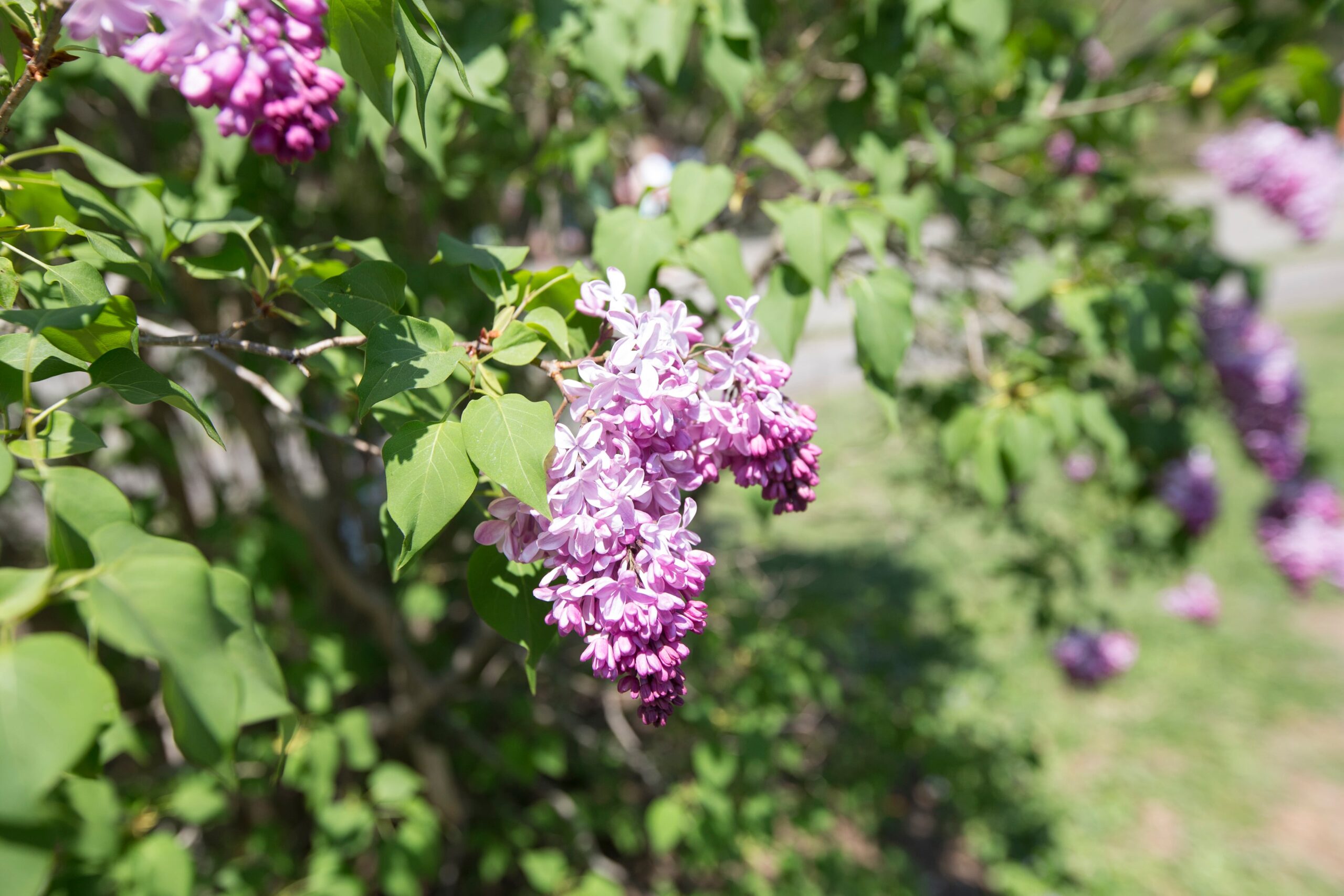Spring House Hunt
For new homeowners, start with the trees and then fill in the blanks.

I simply refuse to let the recent dour weather dampen my enthusiasm for the onset of spring. Bulbs are up and beginning to bloom, my lawn finally looks greener, and the red maples and willows are flowering, providing subtle hues to the forests and wetlands.
Let’s not forget we are still coming out of a late-season drought from last year and that this rain is incredibly helpful in resetting reservoir and ground-water levels. Gardening and optimism go hand in hand, especially during the spring when the promise of rebirth, regrowth, and a fresh start imbues the soul and offers hope.
I am fortunate to garden within two different temporal scales. Professionally, I work at Garden in the Woods, a 94-year-old garden in Framingham managed by the Native Plant Trust, which is celebrating its 125th anniversary this year. This is a magical space with plantings and displays that are only possible after decades of growth.
At my home, we are a mere six years in from when my wife and I became homeowners. Both spaces have valuable lessons to impart, but I will focus primarily on the beginnings of the garden journey as it aligns with the hope, optimism, and joy of spring in New England.
Becoming a homeowner is exciting, daunting, nerve-wracking, and fulfilling all at once. My wife and I are avid gardeners, so we chose our home partly because of the property’s potential.
Our first step was to assess the trees’ health in our yard. Inheriting a large, mature tree comes with a responsibility that previous owners shared, a belief that this organism and all the benefits we enjoy because of its presence are important enough to keep that tree in place. Ecologically, mature trees fulfill an outsized role in local ecosystems, having had decades to build and establish relationships with local wildlife.
However, with any tree growing near our homes, we must also weigh risk. This is why an assessment from a professional arborist is crucial, especially from those who wish to keep old trees alive, rather than simply seeing the dollar signs associated with their removal. We had several larger dying ash trees in our backyard that were already shedding limbs, and with two young children in tow, the decision to remove them was easy. The large oak tree in our front yard, which provides summer shade, brilliant autumn color, and a towering presence, needed structural pruning and deadwood removal to ensure my family’s safety under its boughs.
With the risks removed and mitigated, what trees would we want to plant for the future? This is the most enjoyable part of garden planning and a chance to put a long-range vision into motion. There are loads of options to consider, a shade tree, a flowering tree, or an oak because of its ability to sustain local wildlife. Picture what your tree will look like at maturity rather than when freshly planted, be sure to site the tree with enough room to grow and not cause future concerns with power lines, roof eaves, or fencing. Consider adding an evergreen as an anchor to your tree selections that will give you winter interest and even screen your yard from unwanted views.

Gardens are three-dimensional. Once you have considered the canopy, move onto the shrub layer. Shrubs generally require less maintenance than perennial or annual plantings and are a great way to hold space if you are unsure how much time you can devote to your garden. I have always loved trees and shrubs with fragrant flowers; their scent wafts into open windows and draws your attention back into the garden.
We chose to plant a fringe tree (Chionanthus virginicus) outside our kitchen window, knowing that when in full bloom, you will smell its presence before you lay eyes on the tree itself. Lilacs, summersweet, and witch hazels are also great choices for fragrance in the garden. A third option would be to welcome a shrub that produces edible fruit. A plump, ripe blueberry plucked from your own shrub simply tastes more satisfying than store-bought ones.

The last consideration when starting a new garden would be choosing herbaceous plants, whether they are kitchen herbs such as lavender, rosemary, and sage or flowering perennials. Choosing culinary herbs is a great place to start, but don’t feel pressured to make your decision immediately. There are a lot of choices to weigh and an overwhelming degree of choice at the garden center. In fact, there are too many to fully delve into here, much dependent on your garden and your budget.
Let us pivot to consider the timeline of a new garden journey. You will need to observe and learn a lot about your property in order to make good choices. What are your site conditions? Sun or shade? You won’t know some of the answers to these questions without observing your space over the course of a growing season. Beautiful, ecologically functional gardens take years to develop, so take your time, note your observations over the course of the first year, and begin drafting a plan for your garden. By focusing on the tree and shrub layers first, you create a framework within which to add color, texture, form, and function with herbaceous plants in successive seasons.
Above all, the gardening journey should be joyful, empowering and restorative. No one gets it perfect right from the start, and it is the lessons learned from our mistakes that help make us better gardeners in the future. Although six years have passed since my wife and I began our home garden odyssey, I feel like I am just getting started in a space where we can all grow old together.
Ulrich Lorimer is the director of horticulture at the Native Plant Trust in Framingham. Send your gardening questions, along with your name/initials and hometown, to [email protected] for possible publication. Some questions are edited for clarity.
Address Newsletter
Our weekly digest on buying, selling, and design, with expert advice and insider neighborhood knowledge.
